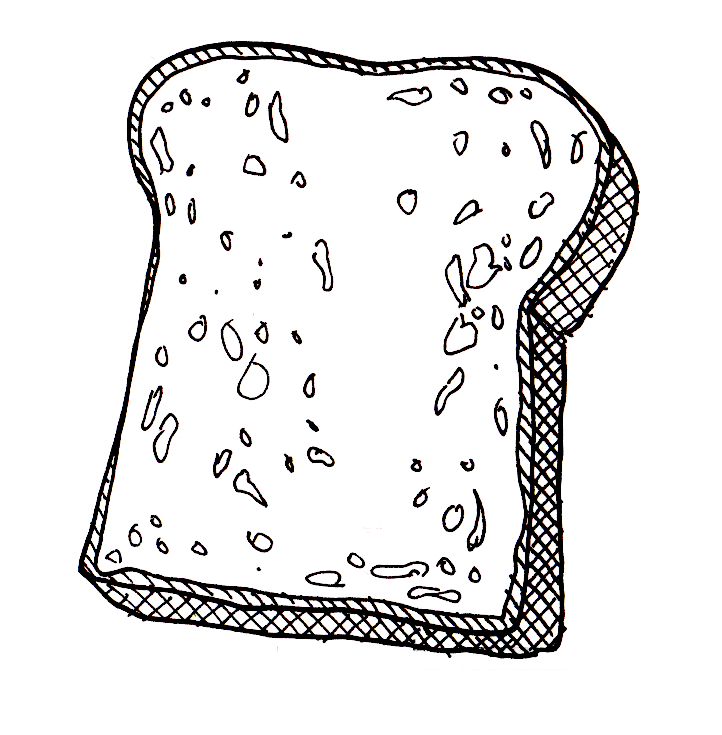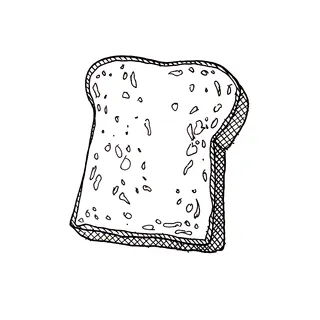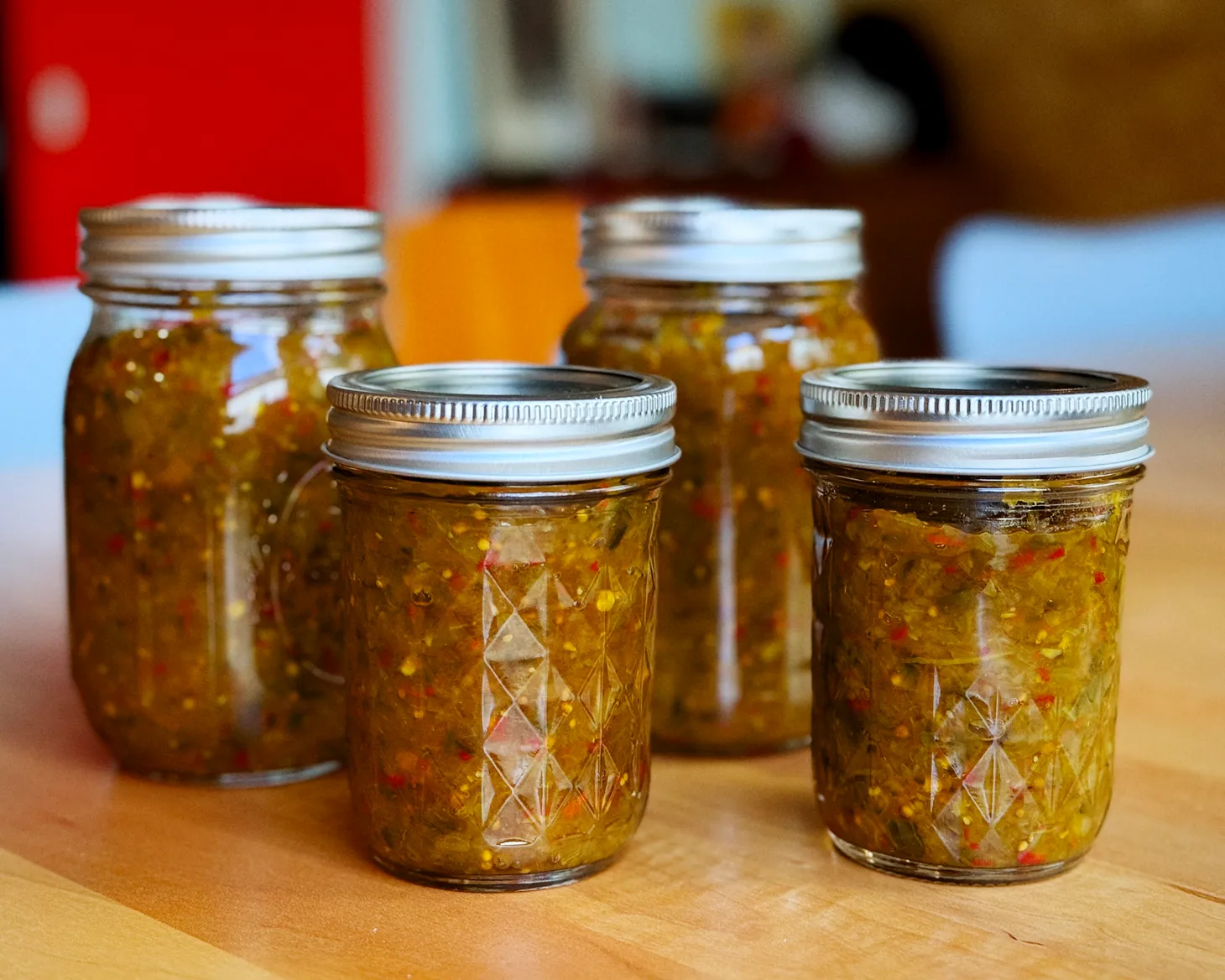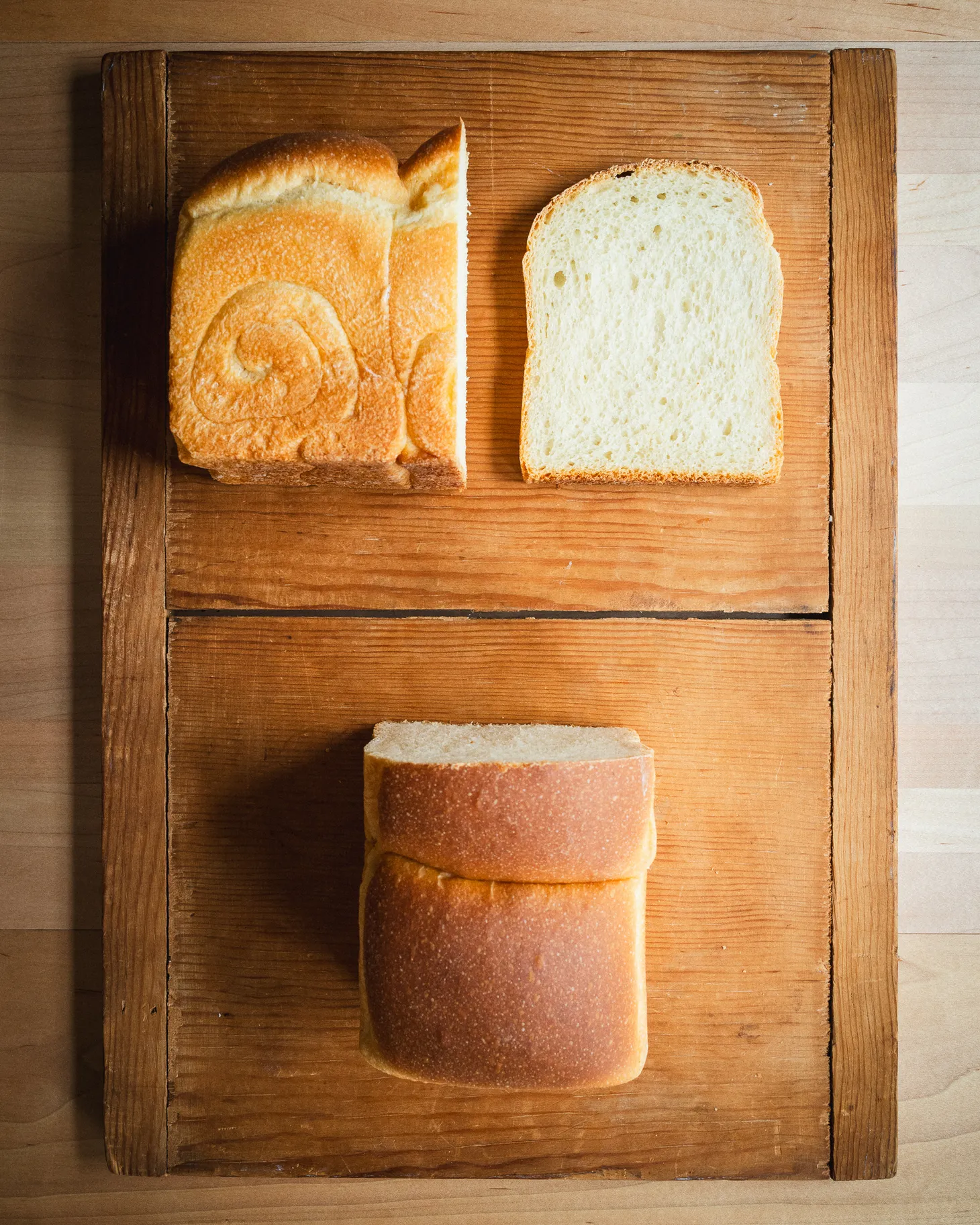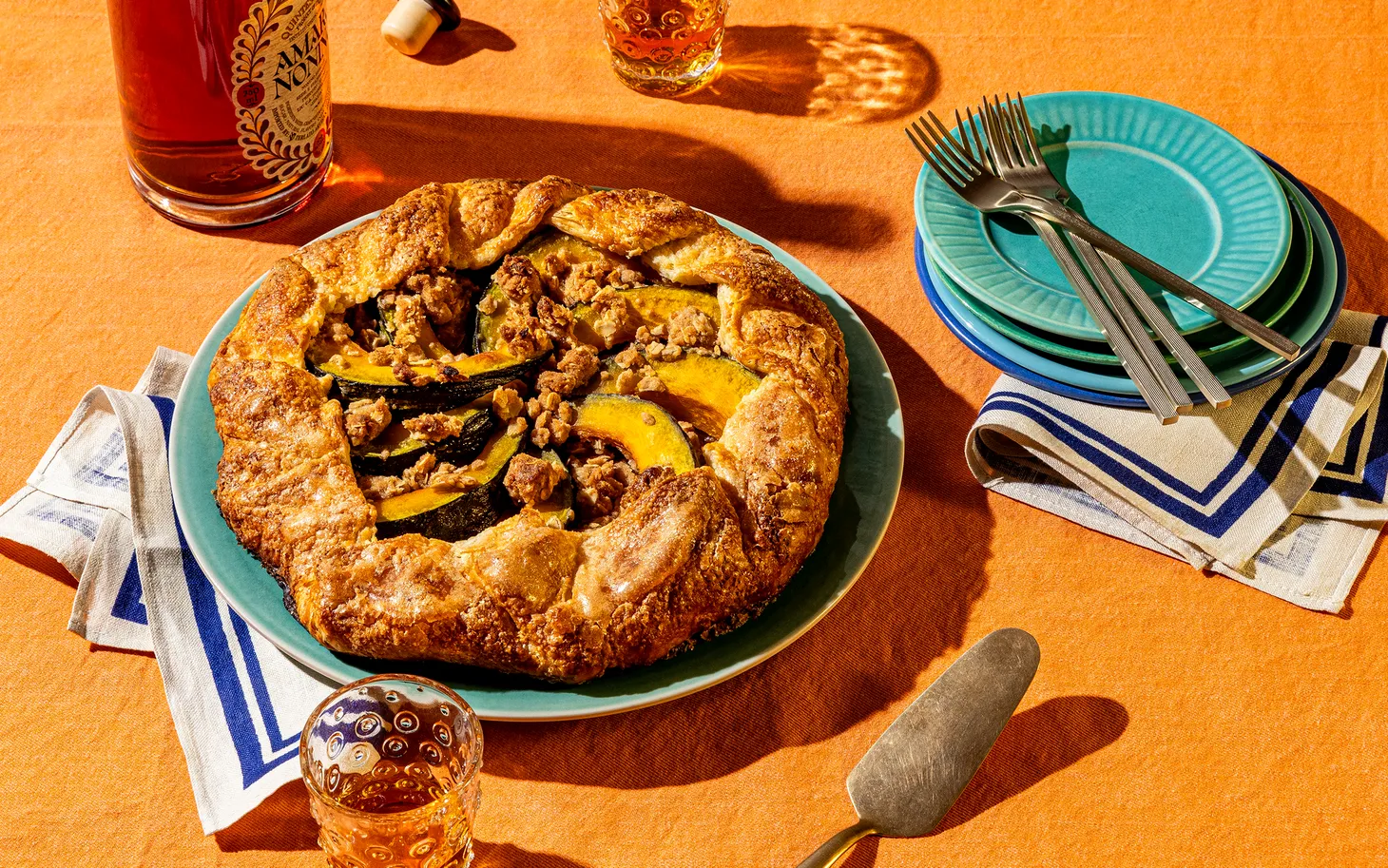Five Easy Pieces: Sourdough Crackers
A guest recipe from Peter Barrett

Table of Contents
Today we have a guest post from my pal Peter Barrett, who helms the excellent newsletter Things on Bread, which is all about...things (you can put) on bread. He is also —along with Rich Shih—one half of the team behind Flavor Freaks, a newsletter devoted to fermentation of all kinds (though not bread, for some reason) and reducing food waste. This recipe runs along those lines: easy & quick-to-make crackers using sourdough discard, something we all have too much of.
—Andrew
Reducing or eliminating waste in the kitchen has been my primary inspiration for some time now, and I wanted to share a recent project with you. Most of us have favorite go-to methods we rely on to use up excess sourdough starter, and this is one of mine. I already wrote about my crêpe recipe (another perennial favorite) here, so this time around I wanted to share my easy cracker formula—writing up five different versions to show how easy (and infinitely flexible) this concept is.
These five variations all have very different flavor profiles, each drawing on distinctive ingredients from a particular tradition. But underneath the hood, as it were, they’re all more alike than they are different in terms of their assembly and execution. Choose a flour, choose a fat, and choose some flavors—that’s the ballgame. This method is perfect for using whatever combination of ingredients you have on hand, and you can scale it up to make as many as you want. Since they store well (including in the freezer), making a lot can be a good idea. But the recipes all call for 100g of starter (at 100%-hydration) because that’s a reasonable amount of discard for a home baker to generate over the course of a few feedings.
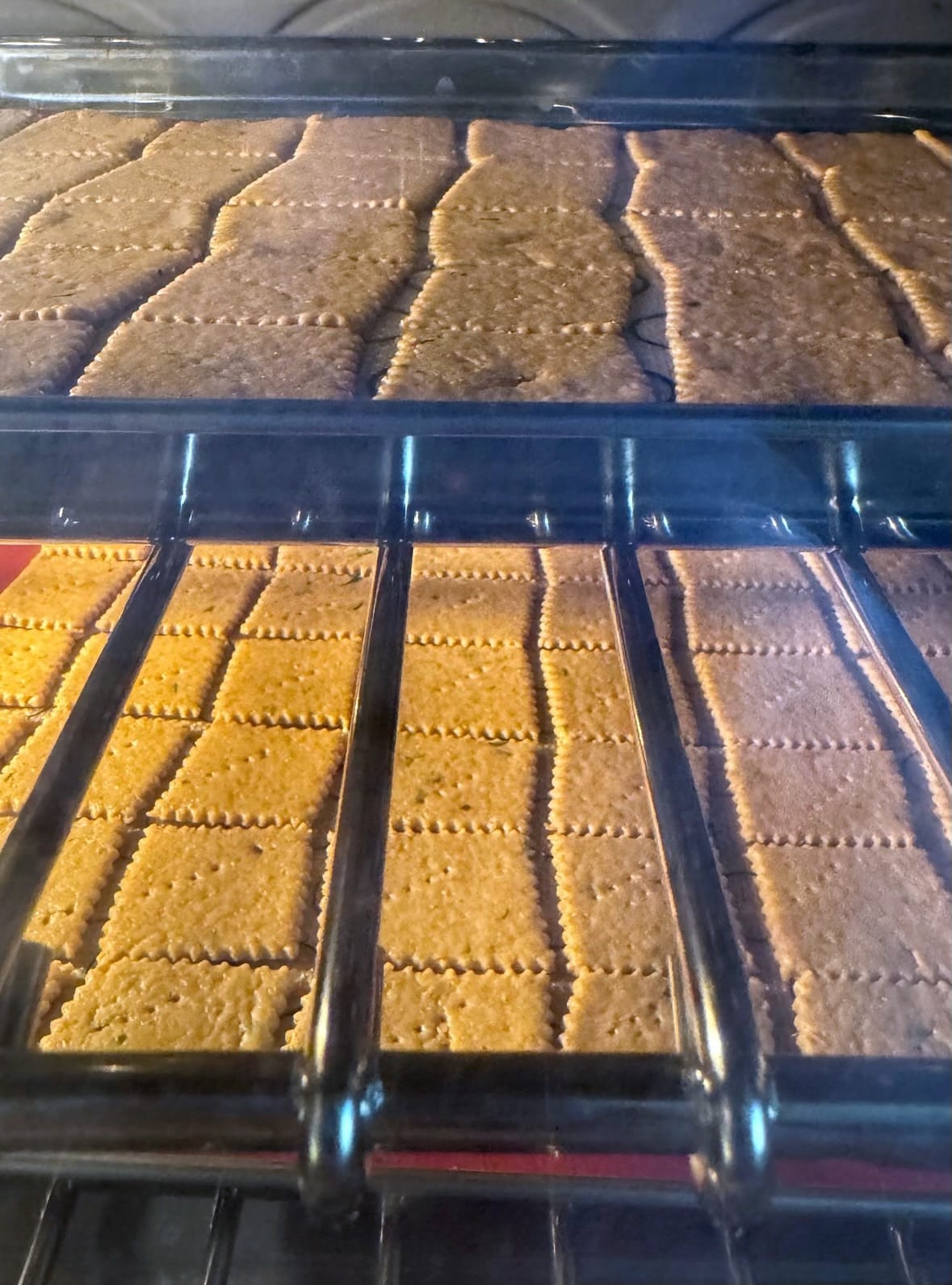
They come together super quickly and bake off fast. They might puff up some if your starter is super vigorous, but if it’s half dead that’s fine too—and they’ll have a pleasantly pronounced sourness to boot.
I generally roll these out on a silpat and then cut them into rectangles or squares with my zigzag pasta cutting wheel. You can use cookie cutters to make any shapes you like, though you’ll have excess that will need to be re-rolled out and stamped again. You can also roll this dough into logs, wrap it in parchment, and refrigerate it, cutting it into slices to make round crackers of whatever thickness you desire. If you do end up with excess from trimming whatever shapes, you can roll the trimmings into grissini—long, thin breadsticks—and bake them so there’s no waste. Be advised, though, that if you cut a sheet of dough into squares like I do that these brown from the outside edges of the sheet in, so leaving those extra strips attached around the perimeter can serve as a buffer for the rest of the sheet.
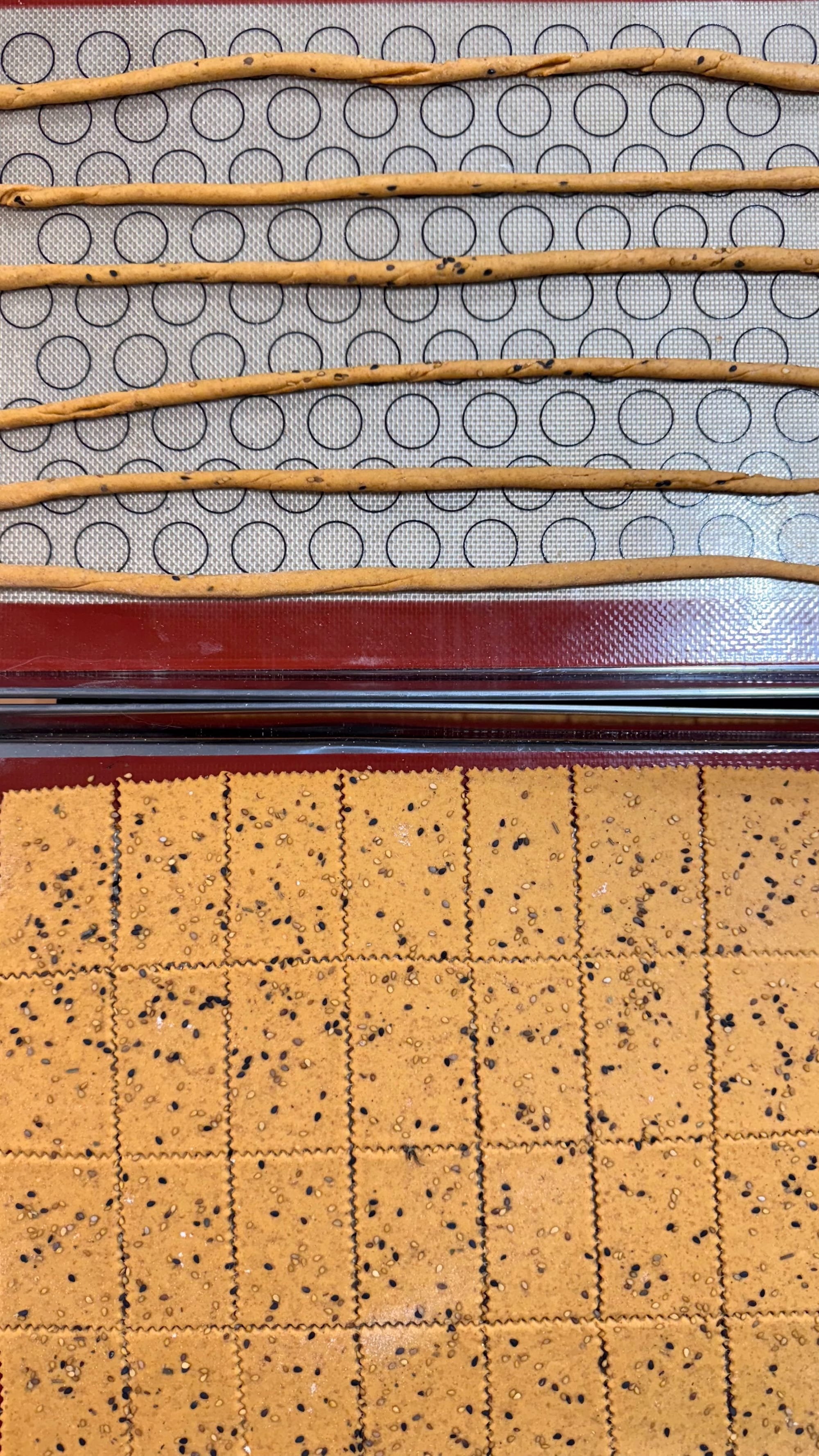
Let’s break down what each component contributes to the result so you can understand the source code for this method. Once you’ve got that clear, you can push and pull on this basic formula all you want to get custom results. Crackers are a forgiving medium, so if you’re apprehensive about the confluence of baking and improvisation, this is an excellent arena in which to hone your skills. The most important thing is that you use the open-source nature of this method to come up with your own favorite combinations. Think about the meal you’re about to make, or the canapé you want to wow your guests with, and then make a cracker with flavors to fit the bill perfectly.
- The starter obviously provides body, some gluten and starch (how much depends on how old it is), and a nice sourness.
- The additional flour provides your first geographical cue, imparting a ton of character with specific qualities and associations. They’re all completely different, and apart from their distinctive flavors you get a lot of texture from each one.
- The fat shortens the dough, adds flavor, and enhances the other flavors.
- The seeds, spices, and herbs (and cheese) nail down the flavor profile you’re going for. I used tried-and-true combinations here, but you should absolutely play with others, taking inspiration from the season, your garden, and/or the meal you have in mind.
- Each recipe yields enough dough to nearly cover a 13 x 18" half-sheet, which should make 80-100 crackers, depending on how you divide it.
Cacio e Pepe
We all know and love those square orange crackers with cheese in the dough, so this recipe is perfect for satisfying that base craving—but with a fig leaf of classy Italian provenance. You can omit the rosemary if you want to hew closer to the eponymous pasta dish, but I like it—thyme and oregano are great too. I also like to add some of my homemade sourdough breadcrumbs for a more interesting texture. Some fennel seeds can also be great in the dough or sprinkled on top and gently rolled in.
100g 100%-hydration sourdough starter
50g semolina
25g Parmigiano, freshly-grated
25g Pecorino, freshly-grated
10g sourdough breadcrumbs
10g olive oil
10g butter, softened
2g salt
2g black pepper, freshly-ground
2g fresh rosemary, minced
Masa-Mole
First you taste the masa, then the mole spices, and then the chipotle heat arrives for a long finish. If you want a crisper, more tortilla chip-like texture, cut back on the fat. Try creating some sort of nacho-type hors d’oeuvre situation with these.
Because you’re adding a significant amount of dry spices to this dough (and because masa is thirsty), a little lime juice provides much-needed hydration and great flavor. A small amount of honey keeps the sourness in balance and deepens the flavor of the spices.
100g 100%-hydration sourdough starter
50g masa
15g pumpkin seed, coconut, or avocado oil or lard
10g lime juice
5g honey or agave
4g salt
2g cumin, toasted and ground
2g coriander, toasted and ground
2g onion powder
2g unsweetened cocoa powder
2g cinnamon
2g chipotle powder
Chaat Masala & Panch Phoron
Chaat masala is the defining flavor of many Indian street food dishes, and panch phoron is a classic Bengali spice blend. I combined them because they only have a couple of spices in common, making for the broadest range of flavor—I read somewhere once that the extreme deliciousness of South Asian food arises out of the complex dissonance between all those spices, which somehow ends up becoming gorgeously consonant. Works for me!
Chickpea flour gives them a nice papadum-adjacent vibe, and turmeric makes them an irresistible golden yellow. Because chickpea flour bakes to a pretty hard consistency, a little extra fat in this recipe helps to shorten the dough accordingly. If you want these to be super crisp and snappy like papadums, ease back on the fat and roll them extra thin. You’ll want to shorten the baking time some too.
100g 100%-hydration sourdough starter
50g chickpea flour
25g coconut oil or ghee
4g chaat masala
4g salt
2g turmeric powder
2g black pepper, freshly ground
Topping
7g panch phoron (whole seeds) or all of the below mixture
Panch phoran spice mix
2g (½ teaspoon) brown mustard seeds
1.2g (½ teaspoon) cumin seeds
1.3g (½ teaspoon) fennel seeds
1.5g (½ teaspoon) nigella seeds
1.1g (¼ teaspoon) fenugreek seeds
Gochujang & Sesame
These almost taste like they have cheese in them, but that’s just the funky magic of gochujang. Sesame oil and a little onion powder add important notes, and honey rounds the flavor out nicely. Kimchi canapés, anyone? (Don’t sleep on kimchi cream cheese as an awesome spread for these or a schmear for sesame bagels).
100g 100%-hydration sourdough starter
60g white rice flour
20g gochujang
20g toasted sesame oil
10g sesame seeds
5g honey
3g salt
2g onion powder
Seeded Scandi-Hippie
This is a sort of mashup between Scandinavian rye crackers and a seedy, crunchy, whole-grain health food vibe: two flavor memories from my youth. Buckwheat combines with the rye to make a beautiful grey-brown color, and while I like the combination of hemp, chia, and sesame seeds you should use whatever mix speaks to you. The butter and the mix of grains and seeds makes these remarkably rich and addictive. Dill seeds will give these a more overtly Scandinavian cant, which might be a good idea if you’re planning to put some herring and pickled beets on top.
100g 100%-hydration sourdough starter
25g dark rye flour
25g buckwheat flour
20g butter
4g salt
Topping
5g sesame seeds
5g hemp hearts
5g chia seeds
The method
The method is the same for all five recipes:
Preheat your oven to 350˚F (175˚C). Add all ingredients to a bowl and mix by hand until fully combined—any lumps of, say, coconut oil should be warmed between your fingers and kneaded until they disappear. Let the dough rest for at least 10 minutes to hydrate the added flour, then roll out a rectangle about ⅛” thick on a silpat or sheet of parchment that will fit a baking sheet.
For the panch phoron and Scandi seed versions, scatter the seeds over your rolled sheet and then gently roll the seeds into the dough.
Cut the crackers into the shape/size that you want, and dock each one with a fork. Bake for 20 minutes, at which point you should turn the tray around and gently spread the crackers out so they catch a hint of brown on the edges, after about another 10 minutes. Let them cool before eating.
Once fully cooled, they’ll keep well in an airtight container at room temperature for at least a week.
wordloaf Newsletter
Join the newsletter to receive the latest updates in your inbox.
